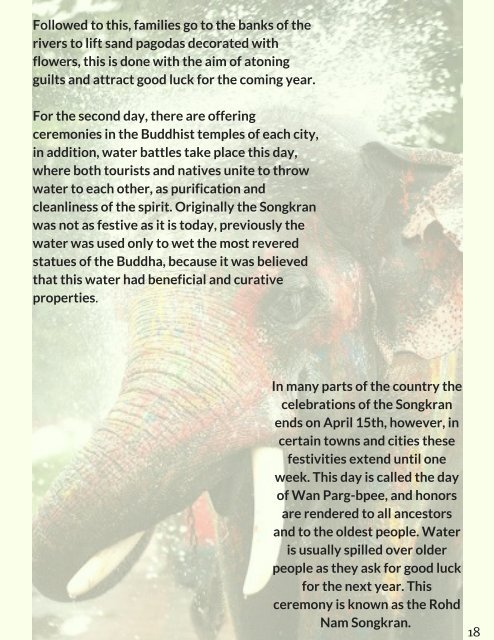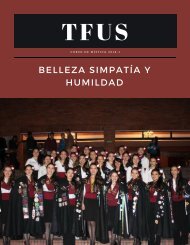Asian Culture
Create successful ePaper yourself
Turn your PDF publications into a flip-book with our unique Google optimized e-Paper software.
Followed to this, families go to the banks of the<br />
rivers to lift sand pagodas decorated with<br />
flowers, this is done with the aim of atoning<br />
guilts and attract good luck for the coming year.<br />
For the second day, there are offering<br />
ceremonies in the Buddhist temples of each city,<br />
in addition, water battles take place this day,<br />
where both tourists and natives unite to throw<br />
water to each other, as purification and<br />
cleanliness of the spirit. Originally the Songkran<br />
was not as festive as it is today, previously the<br />
water was used only to wet the most revered<br />
statues of the Buddha, because it was believed<br />
that this water had beneficial and curative<br />
properties.<br />
In many parts of the country the<br />
celebrations of the Songkran<br />
ends on April 15th, however, in<br />
certain towns and cities these<br />
festivities extend until one<br />
week. This day is called the day<br />
of Wan Parg-bpee, and honors<br />
are rendered to all ancestors<br />
and to the oldest people. Water<br />
is usually spilled over older<br />
people as they ask for good luck<br />
for the next year. This<br />
ceremony is known as the Rohd<br />
Nam Songkran.<br />
18







